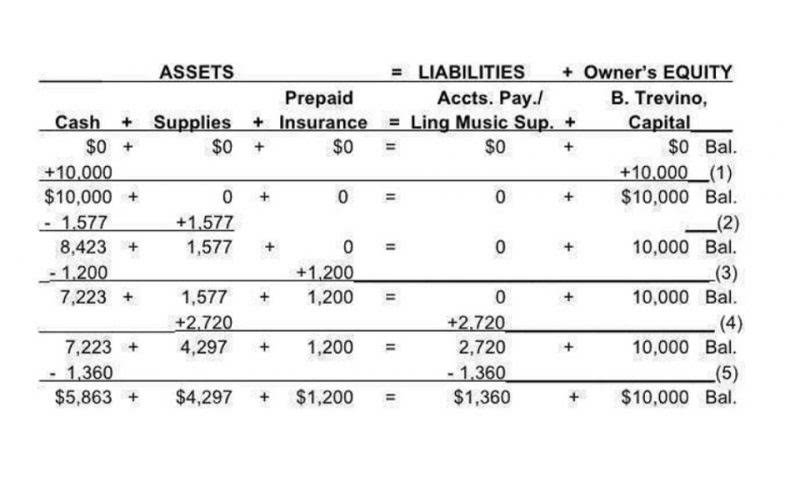10 Mar Audit Assertions Assertions to test in audit process
Liabilities are another area that auditors will review to determine that any bills paid from the business belong to the business and not the owner. Relevant tests – Vouching the cost of assets to purchase invoices and checking depreciation rates and calculations. Rights and obligations – means that the entity has a legal title or controls the rights to an asset or has an obligation to repay a liability. The above procedure is also known as “three-way matching” which refers to the matching of three supporting documents, including invoice, purchase order and receiving report. Issued by the International Accounting Standards Board (IASB), the purpose of the IFRS is to provide a consistent, comprehensive set of transparent and globally applicable accounting auditing standards. For example, the value per square feet in the valuation report should be similar to the value per square feet of other similar properties in that locality.
Valuation and allocation
Therefore, you need to practise explaining the audit procedures as suggested above in order to perform well in the exam. ExistenceThis means that assets, liabilities and equity interests (capital and reserves) are physically present/belong to the entity on the reporting date. Rights and obligationsThis means that the entity has a right to its https://www.bookstime.com/ assets – ie it is free to use or dispose of the assets as it sees fit. Furthermore, the entity is obliged to pay off the liabilities that are shown in the statement of financial position.

Business is Our Business
- For example, an auditor may want to examine payroll records to make sure that all salaries and wages expenses have been recorded in the proper period.
- Assertions in digital audits remain fundamentally the same, but the methods for testing them have adapted to the complexities of digital data.
- Relevant tests – the test for transactions of checking purchase invoice postings to the appropriate accounts in the general ledger will be relevant again.
- When it comes to account balances, management is responsible for making several assertions.
- CutoffThis means that transactions and events have been recorded in the correct accounting period – for example, if goods are delivered prior to year end, they are included in the cost of goods sold, not inventory.
Valuation and allocation assertions pertain to the appropriate valuation of assets and liabilities audit management assertions and the correct allocation of revenues and expenses. Auditors evaluate these assertions by inspecting physical assets, confirming balances with third parties, assessing valuation models, and analyzing liabilities to confirm their existence and valuation at the balance sheet date. Auditors bear the responsibility of conducting a thorough and objective evaluation of management’s assertions. This responsibility entails an understanding of the business and its environment, including the industry in which it operates, regulatory factors, and other external influences that may affect the financial statements. By gaining this understanding, auditors can identify the types of potential misstatements and the factors that may affect the risk of their occurrence. This knowledge informs the design and implementation of audit procedures tailored to the entity’s context.
Classification
In other words, audit assertions are sometimes called financial statements Assertions or management assertions. Take the time to familiarize yourself with the different types of audit assertions and how analytical procedures used to test them helps establish the truthful disclosure of a company’s financial standing. Auditors use this assertion to confirm assets, liabilities, and equity recorded in a company’s financial statements actually belong bookkeeping to that same company. The goal for companies making such assertions is to minimize (or, ideally, avoid) the risk of material misstatement by failing to provide financial data that is, in fact, complete and accurate.
Audit procedures

The points made above regarding aggregation and disaggregation of transactions also apply to assets, liabilities and equity interests. Below is a summary of the assertions, a practical application of how the assertions are applied and some example audit procedures relevant to each. Transactions and events disclosed in the financial statements have occurred and relate to the entity. The examiner’s reports mention various errors that candidates make while writing audit procedures. If the above mentioned procedure is written as ‘The auditor will check a sample of items from the inventory sheets to the raw material inventory’, it is incomplete as it does not mention why the audit procedure is being performed.
Types & Examples

Account balances include all the asset, liabilities and equity interests included in the statement of financial position at the period end. The implicit or explicit claims by the management on the preparation and appropriateness of financial statements and disclosures are known as management assertions. Assertions assist auditors in considering a wide range of issues that are relevant to the authenticity of financial statements. The consideration of management assertions during the various stages of audit helps to reduce the audit risk. The auditor’s professional skepticism is an indispensable tool in evaluating assertions. This mindset involves a questioning mind and a critical assessment of audit evidence.
When performing an audit, it is the auditor’s job to obtain the necessary evidence to verify the assertions made in the financial statements. Whether you’re using accounting software or recording transactions in multiple ledgers, the audit assertion process remains the same. Assertions play a foundational role in the audit process, serving as the benchmarks against which auditors measure the accuracy and reliability of financial statements.



Sorry, the comment form is closed at this time.